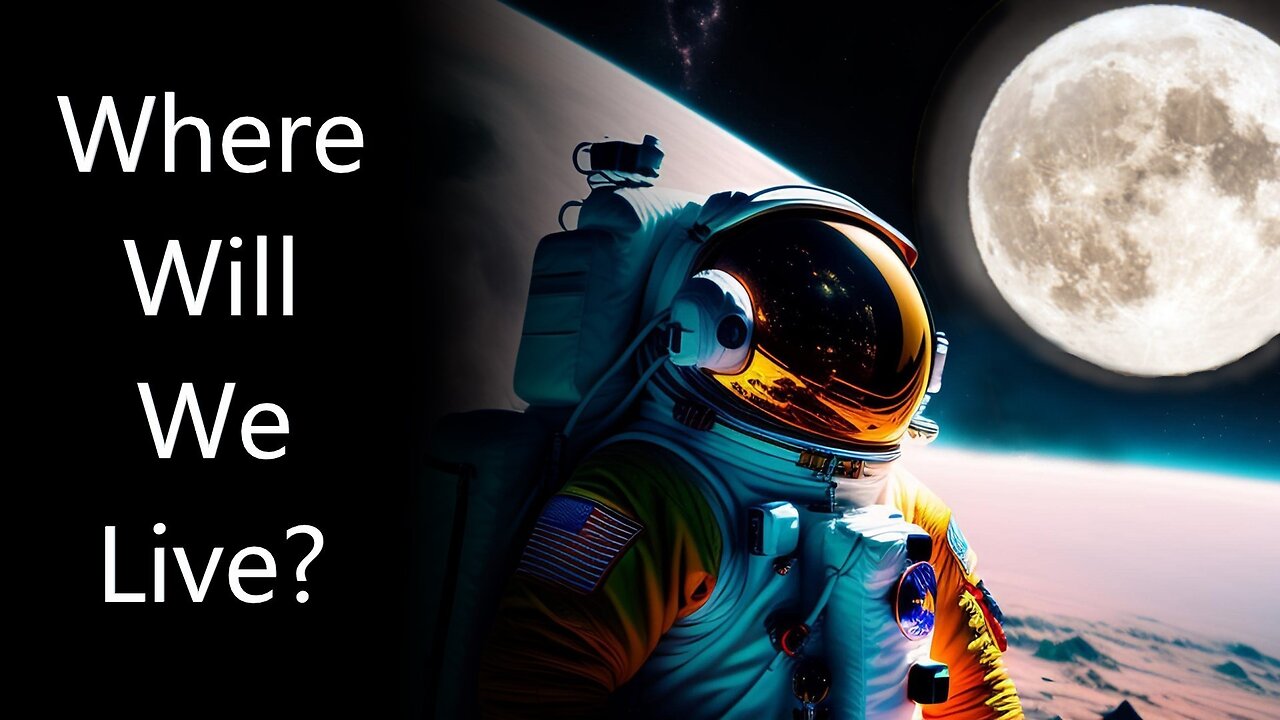Premium Only Content

LEAVING EARTH - Where We Will Live, And Where We Won't - 5 WINNERS & 5 LOSERS
Why We Will Live on the Moon, Mars, Mercury, Ceres, and Callisto
1. The Moon The Moon is the closest celestial body to Earth, making it a prime candidate for human habitation. Its proximity allows for easier transportation of materials and personnel. The Moon has resources such as water ice in permanently shadowed craters, which can be used for drinking water and converted into hydrogen and oxygen for fuel. Additionally, the lunar regolith contains useful materials like helium-3, which could potentially be used in nuclear fusion.
2. Mars Mars is often considered the most viable option for human colonization due to its similarities to Earth. It has a day length similar to Earth’s (24.6 hours) and polar ice caps that contain water. Mars has a thin atmosphere composed mostly of carbon dioxide, which presents challenges but also opportunities for terraforming or creating habitats with controlled environments. The presence of past liquid water indicates that it may have once supported life, making it an intriguing target for exploration and potential colonization.
3. Mercury While Mercury’s surface conditions are extreme due to high temperatures during the day and freezing temperatures at night, its proximity to the Sun makes it an interesting candidate for solar energy harvesting. There are areas near its poles that are permanently shadowed and may harbor water ice. Future technologies could potentially allow us to create habitats that protect against harsh surface conditions.
4. Ceres Ceres is classified as a dwarf planet located in the asteroid belt between Mars and Jupiter. It possesses a significant amount of water ice beneath its surface and possibly briny liquid water in some regions. This makes it a potential site for future human habitation or resource extraction, particularly as we look towards mining asteroids for valuable materials.
5. Callisto Callisto is one of Jupiter’s moons and is considered one of the most heavily cratered bodies in our solar system. Its surface is believed to contain a subsurface ocean of liquid water, which could support life or provide resources for human colonization efforts. Callisto’s distance from Jupiter means it experiences less radiation than other Galilean moons like Io or Europa, making it more suitable for long-term human habitation.
Why We Won’t Live on Venus, Ganymede, Europa, Titan, and Pluto
1. Venus Venus presents extreme challenges due to its thick atmosphere composed mainly of carbon dioxide with clouds of sulfuric acid, leading to crushing atmospheric pressure (about 92 times that of Earth) and surface temperatures hot enough to melt lead (around 465°C). These conditions make it nearly impossible for humans or traditional spacecraft to survive without advanced protective technology.
2. Ganymede Ganymede is another moon of Jupiter; while it is larger than Mercury and has a magnetic field suggesting internal activity, its environment poses significant challenges due to high radiation levels from Jupiter’s magnetosphere and extreme cold temperatures averaging around -160°C (-260°F). These factors complicate any potential colonization efforts.
3. Europa Europa is known for its icy surface covering a subsurface ocean that may harbor life; however, similar to Ganymede, it suffers from intense radiation exposure from Jupiter’s magnetic field which would pose serious risks to human health over extended periods.
4. Titan Titan is Saturn’s largest moon with a dense atmosphere primarily made up of nitrogen; however, its surface temperature averages around -179°C (-290°F), making it inhospitable by Earth standards. While there are lakes of methane on Titan’s surface that intrigue scientists regarding prebiotic chemistry possibilities, these extreme cold conditions would require substantial technological advancements for human survival.
5. Pluto Pluto is classified as a dwarf planet located in the Kuiper Belt with extremely low temperatures averaging around -225°C (-373°F). Its thin atmosphere primarily consists of nitrogen with traces of methane and carbon monoxide makes sustaining human life challenging without advanced life-support systems capable of functioning under such frigid conditions.
In summary:
We will live on: The Moon (proximity & resources), Mars (Earth-like conditions), Mercury (solar energy & potential resources), Ceres (water ice & mining potential), Callisto (subsurface ocean & lower radiation).
We won’t live on: Venus (extreme heat & pressure), Ganymede (radiation & cold), Europa (radiation & cold), Titan (extreme cold), Pluto (extreme cold).
100% of Rumble Views
AND CHANNEL REVENUE
Go To Private MOON Mission!
https://rumble.com/user/WhatsNextVids
Subscribe:
https://www.youtube.com/@TheBetterNASAProject
Patreon:
https://www.patreon.com/user?u=37594401
Buy Me A Coffee:
https://www.buymeacoffee.com/whats.next
Donate With Cash App:
https://cash.app/$YTpayments
X/Twitter:
https://x.com/WhatsNe75388303
-
 LIVE
LIVE
The Big Mig™
2 hours agoOperation Arctic Frost FAFO!
4,729 watching -
 1:01:47
1:01:47
VINCE
3 hours agoThere Is More Than Meets The Eye With Trump's Ballroom | Episode 154 - 10/24/25
115K131 -
 1:47:48
1:47:48
Badlands Media
9 hours agoBadlands Daily: October 24, 2025
28.5K2 -
 LIVE
LIVE
Major League Fishing
8 days agoLIVE! - Fishing Clash Team Series: Patriot Cup - Day 3
146 watching -
 LIVE
LIVE
Film Threat
1 day agoFRANKENSTEIN + SHELBY OAKS + CHAINSAW MAN + MORE REVIEWS | Film Threat Livecast
56 watching -
 LIVE
LIVE
Side Scrollers Podcast
23 hours ago🔴FIRST EVER RUMBLE SUB-A-THON🔴DAY 4🔴BLABS VS STREET FIGHTER!
1,067 watching -
 1:07:07
1:07:07
Graham Allen
3 hours agoLibs Are FUMING Over Trumps Ballroom! + Trump ENDS ALL Trade Talk With Canada And NBA Scandal!!
93.7K68 -
 27:30
27:30
Simply Bitcoin
1 day ago $4.52 earnedAndré Loja: The Man Building a Sovereign Bitcoin Island
19.8K5 -
 30:50
30:50
Matt Kohrs
1 day agoPlan B w/ Rahim Taghizadegan || The Matt Kohrs Show
23.8K -
 LIVE
LIVE
Wendy Bell Radio
7 hours agoWho Is More Illegal?
6,367 watching